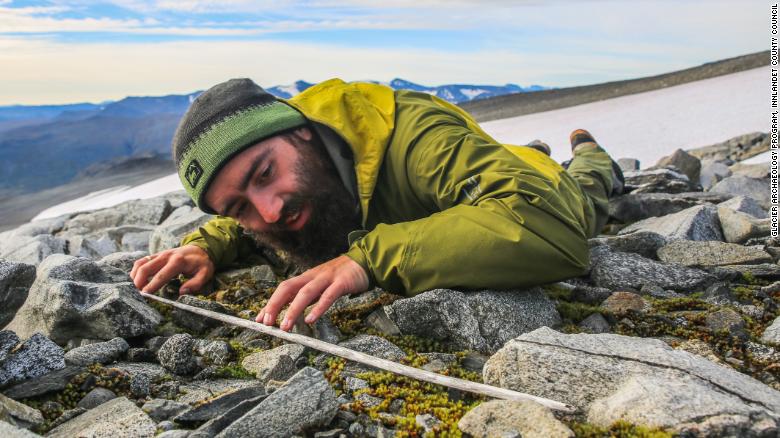Climate crisis: Melting mountain ice reveals ancient artefacts in Norway
‘The ice melt, sad as it is, provides an unprecedented archaeological opportunity for new knowledge’

Your support helps us to tell the story
From reproductive rights to climate change to Big Tech, The Independent is on the ground when the story is developing. Whether it's investigating the financials of Elon Musk's pro-Trump PAC or producing our latest documentary, 'The A Word', which shines a light on the American women fighting for reproductive rights, we know how important it is to parse out the facts from the messaging.
At such a critical moment in US history, we need reporters on the ground. Your donation allows us to keep sending journalists to speak to both sides of the story.
The Independent is trusted by Americans across the entire political spectrum. And unlike many other quality news outlets, we choose not to lock Americans out of our reporting and analysis with paywalls. We believe quality journalism should be available to everyone, paid for by those who can afford it.
Your support makes all the difference.An archaeological survey of an ice patch in Norway’s Jotunheimen mountains has led to a haul of ancient artefacts.
The survey, which was conducted on the Langfonne ice patch in 2014 and 2016, discovered Iron Age scaring sticks used in reindeer hunting, reindeer antlers, a 3,300-year-old shoe from the Bronze Age, and 68 arrows.
The report’s authors have hailed the discovery of the arrows as the earliest ice finds in northern Europe.
Global warming has caused the ice patch to retreat by more than 70 per cent over the past two decades, the study found.
“With the ice now retreating due to climate change, the evidence for ancient hunting at Langfonne is reappearing from what is in essence a frozen archive,” said Lars Pilo, the study’s lead author and an archaeologist from the Innlandet County Council.
“The ice melt, sad as it is, provides an unprecedented archaeological opportunity for new knowledge.”
The finds come in a range of conditions, with the oldest arrows, from 4000BC, in poor condition. However, the arrows from the Late Neolithic period (2400-1750BC) have been better preserved in comparison to those from the following 2,000 years, according to the study.
Using ground-penetrating radar (GPR) technology, researchers concluded that the ice movement might be the reason behind the deterioration of the oldest arrows.
GPR data revealed ice deformation deep inside of the patch may have broken the old, brittle arrows, but it also helped to bring them to the surface to be discovered.
“Ice patches are not your regular archaeological sites,” Mr Pilo said. “Glacial archaeology has the potential to transform our understanding of human activity in the high mountains and beyond.”



Join our commenting forum
Join thought-provoking conversations, follow other Independent readers and see their replies
Comments